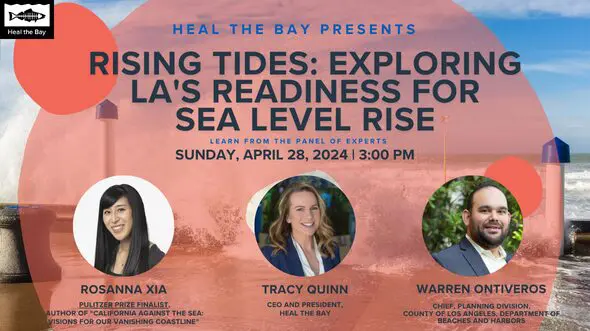Wait, There’s a Creek Under the 710?
This week’s blogger is Stephen Mejia, a Southern California native who majored in Environmental Studies at UC Santa Cruz and has been interning with Heal the Bay’s programs and education departments.
I grew up in the South Bay. Its patchwork of strip malls, industrial zones and neighborhoods full of houses are so familiar to me, yet I only recently realized that a real aquatic ecosystem home to tall grasses, the occasional tree and visiting water fowl flows through this built-up environment: Compton Creek.
These are sights you might expect in Malibu, Palos Verdes, Azusa or any other communities along the coast or away from Los Angeles’ metropolitan center. Yet Compton Creek runs between two of the busiest transportation structures carrying cargo to and from the Port of Los Angeles: the Alameda Corridor to the west and the 710 freeway on the east.
The Creek is roughly four and a half miles north from the port, and over 10 miles east of the Manhattan and Hermosa beaches. Encircled by major transportation highways, Compton Creek quietly travels southeast, past old rail-yards and underneath the 710 freeway to carry storm water and urban runoff to the channelized L.A. River.
I was shocked to learn this free-flowing anomaly even existed (in my own backyard, no less!) when Heal the Bay staffers James Alamillo and Edward (Eddie) Murphy introduced me to Compton Creek as part of an internship assignment focused on environmental advocacy.
As I soon discovered, Heal the Bay’s mission reaches far beyond Santa Monica Bay, as the organization has always been about protecting and improving the health of Southern California waterways both inland and coastal through science, education, community action and advocacy. To that end, Heal the Bay has been successfully utilizing the uniqueness of Compton Creek to reach those inland communities that have just as much stake in the protection of our waters.
Urban Programs Manager James Alamillo is often found taking community partners, college students, and other interested parties to Compton Creek as a case study for challenges of urban planning. James outlines how the concepts of resource conservation, community awareness, private stakeholders and impetus for development interact to form the management practices of urban natural resources. This has helped create more informed and empowered communities that can take a greater stake in the determination of how their local resources are utilized.
As Heal the Bay’s Secondary Education Coordinator, Eddie manages the Creek 101 program where students are guided to study biology and chemistry principles culminating with a water quality testing and biological assessments in Compton Creek. Creek 101’s success has grown tremendously as educators, parents, and students continue to express enthusiasm and desire to make the program a regular part of their curriculum.
Without Compton Creek, the impact of these programs would be incredibly hampered. There are few experiences more positively transformative for an inland resident than discovering that the space in which we live, transit, work, and play can offer so much more than just pavement and buildings. The importance of Compton Creek is undeniable and its example hopeful. We must — and can — do better at managing our own local, natural resources.
I am incredibly thankful to Heal the Bay for introducing me to Compton Creek. You too could discover something new in your own backyard. Find out about ways you can get involved.



